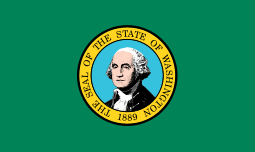Naval Outlying Field Coupeville
| NOLF Coupeville | |||||||||||
|---|---|---|---|---|---|---|---|---|---|---|---|
|
| |||||||||||
| IATA: none – ICAO: KNRA – FAA LID: NRA | |||||||||||
| Summary | |||||||||||
| Airport type | Military | ||||||||||
| Operator | US Navy | ||||||||||
| Location | Island County, near Coupeville, Washington | ||||||||||
| Elevation AMSL | 199 ft / 61 m | ||||||||||
| Coordinates | 48°11′00″N 122°38′00″W / 48.18333°N 122.63333°WCoordinates: 48°11′00″N 122°38′00″W / 48.18333°N 122.63333°W | ||||||||||
| Runways | |||||||||||
| |||||||||||
Naval Outlying Field Coupeville (ICAO: KNRA, FAA LID: NRA) is a military airport located two miles (3 km) southeast of Coupeville, Washington, in Island County. It is owned by the United States Navy.[1] NOLF Coupeville nearly touches State Route 20 and is about 10 miles south of NAS Whidbey Island.

History and usage
NOLF Coupeville, also known as OLF Coupeville, was commissioned for use by the US Navy in 1943 and currently supports day and night Field Carrier Landing Practice (FCLP) operations by the US Navy EA-18G Growler and EA-6B Prowler electronic warfare aircraft based out of NAS Whidbey Island. Such operations allow Naval Aviators and crew to fly in patterns as well as practice touch-and-go landings, simulating carrier landings and take offs. During these practice runs, jet aircraft approach the runway and touch down, immediately taking off again and looping around the field to prepare for another landing and take off. Each aircraft makes multiple touch-and-go landings during these training events. While performing the touch and go maneuvers, the practicing aircraft fly at appropriate altitudes and speeds in addition to flying at or near sea level. OLF Coupeville is seen by the Navy as an ideal airfield for this type of carrier training due to its remote location and low ambient lighting, allowing pilots and crew to have the optimum experience for replication of landing aboard an aircraft carrier.
Environmental concerns
While jet noise had been an on and off concern to residents living near the NOLF, a local citizen's group filed a lawsuit in July 2014 demanding an Environmental Impact Study (EIS) examining EA-18G Growler flight operations at NOLF Coupeville and NAS Whidbey Island.[2] The Navy initiated an ongoing EIS to "evaluate the potential environmental effects associated with ongoing and future Growler operations at NAS Whidbey Island’s Ault Field and Outlying Landing Field (OLF) Coupeville." [3] The citizen's group has placed the litigation on hold until the study is completed.[4]
%2C_Sound_map.jpg)
References
- ↑ FAA Airport Master Record for NRA (Form 5010 PDF)
- ↑ Burnett, Justin (21 July 2013). "Federal Suit Filed; OLF Practices Suspended". Whidbey News-Times. Whidbey Newsgroup. Retrieved 19 July 2014.
- ↑ "Environmental Impact Statement for the EA-18G Growler Airfield Operations". US Navy. n.d. Retrieved 19 July 2014.
- ↑ Reid, Janis (19 September 2013). "Anti-OLF group putting federal suit on hold". Whidbey News-Times. Whidbey Newsgroup. Retrieved 19 July 2014.
- ↑ The Onyx Group (March 2005). "Aircraft Installations Compatible Use Zones (AICUZ) Study Update for Naval Air Station Whidbey Island's Ault Field and Outlying landing Field Coupeville" (PDF). Government Publication. Naval Facilities Engineering Command (NAVFAC) Southwest, San Diego, California. pp. Figure 4–4. Retrieved 30 October 2015.
External links
-
 Media related to Naval Outlying Field Coupeville at Wikimedia Commons
Media related to Naval Outlying Field Coupeville at Wikimedia Commons - NAS Whidbey Island history
- NOLF Coupeville at GlobalSecurity.org
- Resources for this airport:
- FAA airport information for NRA
- AirNav airport information for NRA
- FlightAware airport information and live flight tracker
- SkyVector aeronautical chart for NRA
